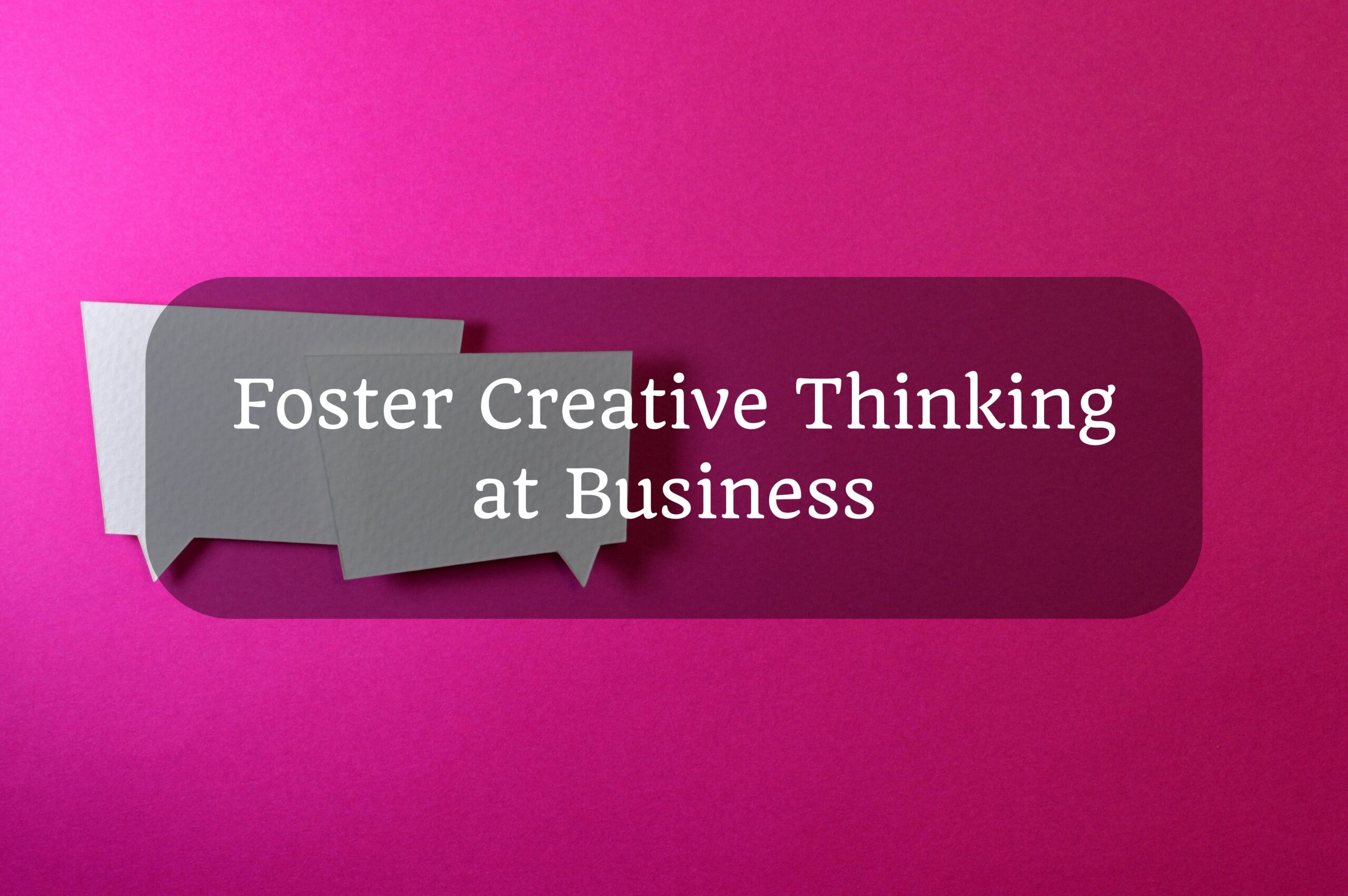Unlocking Innovation: How to Foster Creative Thinking in Your Business
Discover effective strategies to cultivate a culture of creativity in your organization. From promoting diverse teams to leveraging technology, learn how to inspire innovative thinking and drive business success. Embrace creativity as a core value to unlock your team’s full potential.
Creative thinking is the cornerstone of innovation. It enables businesses to solve problems, adapt to market changes, and create new products and services that meet evolving customer needs. According to a report by McKinsey, companies that embrace creativity enjoy 1.5 times greater market share growth compared to their competitors. In a world where disruption is the norm, nurturing a culture of creativity can give businesses a competitive edge.
Related Article: How to Increase Creativity and Imagination
Moreover, creative thinking leads to better decision-making. When teams approach challenges with an open mind and a willingness to explore new ideas, they can devise more effective solutions. By fostering a culture of creativity, businesses not only enhance their innovation capacity but also improve employee engagement and satisfaction.


Cultivating a Supportive Organizational Culture
Creating an environment that nurtures creativity begins with your organizational culture. Here are some ways to cultivate a supportive culture:
Encourage Open Communication
Open communication is vital for fostering creativity. When employees feel comfortable sharing their ideas without fear of judgment, it creates a collaborative atmosphere conducive to innovation. Encourage your team to voice their thoughts in meetings, and consider implementing anonymous suggestion boxes or digital platforms where they can share ideas freely.
Related Article: Teamwork makes the Dream-Work
Celebrate Failure as a Learning Opportunity
In many organizations, failure is stigmatized, leading to a culture of fear that stifles creativity. Shift the perspective on failure from something negative to a valuable learning experience. By celebrating efforts and acknowledging that not all ideas will succeed, you encourage employees to take risks and explore new concepts without fear of repercussions.
Foster a Sense of Belonging
A supportive culture also requires fostering a sense of belonging. Employees who feel valued and connected to their workplace are more likely to contribute creatively. Implement team-building activities and create opportunities for employees to connect on a personal level, strengthening relationships within the team.
The Power of Diverse Teams
Diversity is a catalyst for creativity. Teams composed of individuals with varied backgrounds, experiences, and perspectives are more likely to generate unique ideas. Here’s how to harness the power of diversity in your organization:
Recruit from a Wide Talent Pool
Actively seek out candidates from different cultural, educational, and professional backgrounds to create a rich tapestry of ideas. Diverse teams bring different viewpoints, leading to more innovative solutions. Emphasize diversity in your hiring process and establish partnerships with organizations that promote underrepresented groups in your industry.
Foster Inclusion
Creating a diverse team is only the first step; fostering inclusion is equally important. Ensure that all voices are heard and valued within the team. Create opportunities for everyone to contribute to brainstorming sessions and decision-making processes. Implement mentorship programs that pair junior employees with experienced leaders to foster growth and inclusion.
Embrace Diverse Perspectives
Encourage team members to share their unique perspectives. This can be achieved through regular team meetings where everyone is given the floor to discuss ideas and challenges. Consider using techniques like “reverse brainstorming,” where the team identifies ways to make a problem worse, ultimately leading to creative solutions to avoid those pitfalls.
Promoting Collaboration and Teamwork
Collaboration is key to unlocking creativity. Here are some effective strategies to promote teamwork within your organization:
Facilitate Brainstorming Sessions
Regular brainstorming sessions can serve as a platform for team members to share ideas freely. Use techniques like mind mapping or design thinking to encourage creative problem-solving. Establish ground rules for brainstorming sessions, such as deferring judgment, encouraging wild ideas, and building on the ideas of others.
Encourage Cross-Departmental Projects
Bringing together individuals from different departments can spark fresh ideas and innovative solutions. Create opportunities for collaboration on projects that require diverse skill sets. For instance, consider forming cross-functional teams for product development or problem-solving initiatives.
Utilize Collaborative Technology
Invest in tools that facilitate collaboration, such as project management software, communication platforms, and brainstorming applications. These technologies can enhance team connectivity and streamline the creative process, making it easier for employees to share ideas and feedback.
Designing Flexible Workspaces
The physical workspace can significantly impact creative thinking. Consider these elements when designing your office:
Create Open and Collaborative Spaces
Design areas that encourage teamwork and interaction, such as lounge areas, breakout rooms, and collaborative workstations. Open floor plans can promote spontaneous conversations and collaboration, but ensure that there are also quiet spaces for individual focus when needed.
Support Remote Work Options
Allowing employees to work remotely can enhance creativity by providing them with a comfortable environment where they feel most productive. Consider flexible work arrangements that enable employees to choose where they work best, whether in the office or at home.
Incorporate Nature and Inspiration
Integrating natural elements into the workspace can boost creativity and well-being. Research shows that exposure to nature can enhance cognitive function and creativity. Incorporate plants, natural light, and artwork to create an inspiring environment that fosters innovative thinking.
Leadership’s Role in Fostering Creativity
Leaders play a crucial role in shaping a creative environment. Here’s how to lead by example:
Model Creative Thinking
Demonstrate your commitment to creativity by sharing your own ideas and encouraging team members to do the same. As a leader, your openness to new ideas sets the tone for the entire organization.
Related Article: How to Practice Creative Thinking
Provide Support and Resources
Ensure that employees have access to the tools, resources, and time they need to explore their creative ideas. This support can include allocating budget for training or providing time for innovation projects.
Encourage Feedback and Adaptation
Solicit feedback from employees about the creative processes and culture within the organization. Adapt and iterate based on this feedback to create a continuously improving environment for creativity.
Measuring the Impact of Creativity on Business Success
Assessing the effectiveness of your creative initiatives is essential. Consider these methods:
Track Innovation Metrics
Monitor key performance indicators (KPIs) related to innovation, such as the number of new ideas implemented, revenue generated from new products, or the impact of creative initiatives on customer satisfaction. These metrics can provide insights into the success of your creativity efforts.
Gather Employee Feedback
Regularly solicit feedback from employees about their experiences with the creative processes and culture within the organization. Surveys or focus groups can help identify areas for improvement and highlight successful initiatives.
Share Success Stories
Highlight successful creative projects and initiatives within the organization. Sharing these success stories can inspire others and reinforce the importance of creativity in driving business success.

Overcoming Common Barriers to Creativity
Identifying and addressing barriers to creativity is vital. Here are some common obstacles and how to overcome them:
Fear of Criticism
Foster a non-judgmental environment where feedback is constructive and focused on ideas, not individuals. Encourage team members to embrace feedback as an opportunity for growth and improvement.
Rigid Processes
Evaluate and streamline processes that may hinder creativity. Allow for more flexibility in how ideas are developed and implemented, encouraging teams to experiment and explore new approaches.
Resource Constraints
Address concerns about limited resources by providing employees with the tools they need to succeed. This may involve reallocating budgets or providing additional training to enhance their skills.
Conclusion: Embracing a Culture of Creativity
In conclusion, fostering creative thinking in your business is not just a nice-to-have; it’s essential for long-term success. By cultivating a supportive culture, promoting diversity, investing in training, and implementing effective processes, you can unlock innovation and drive your organization forward. Embrace creativity as a core value, and watch your business thrive in an ever-evolving landscape.

